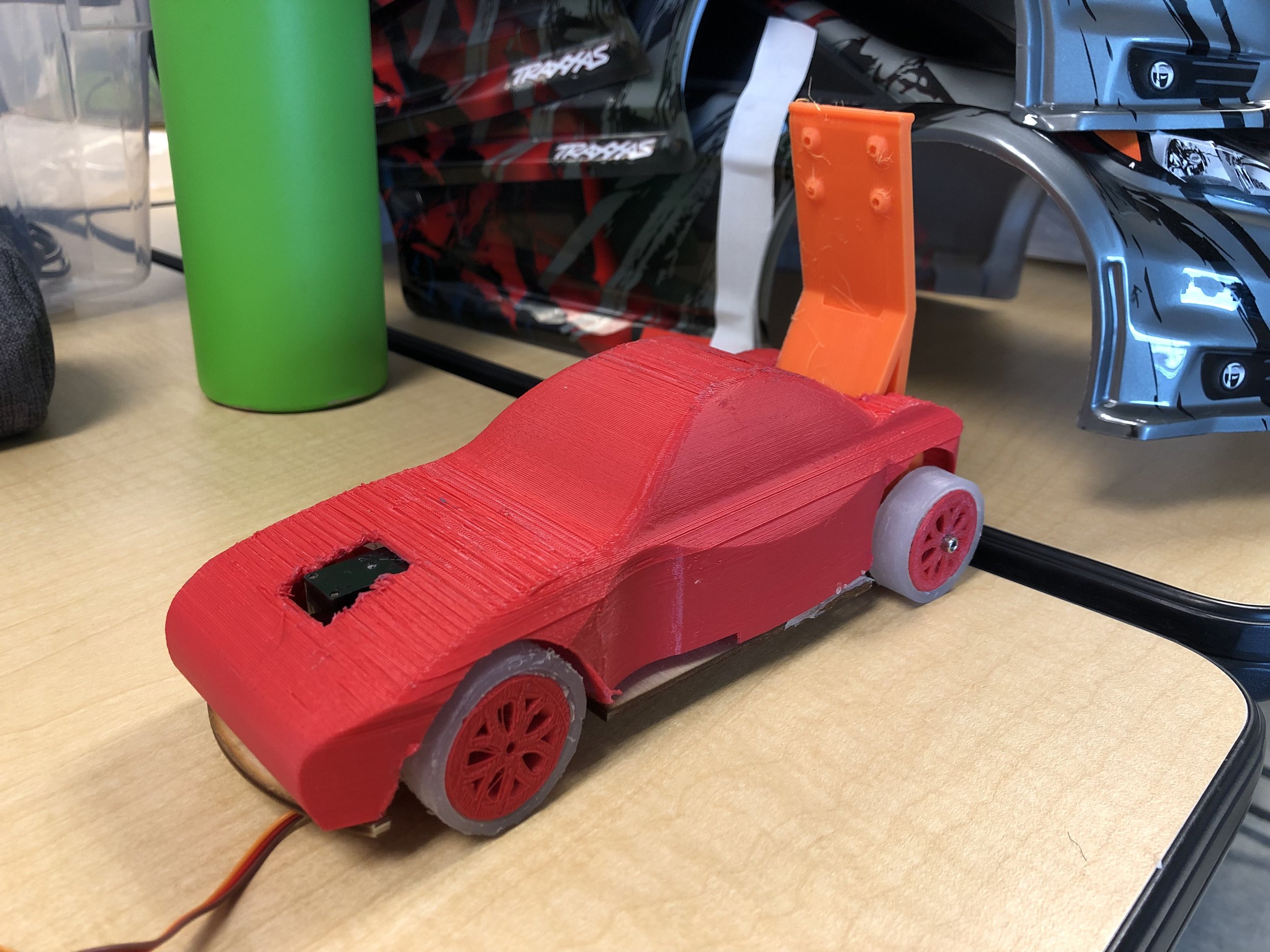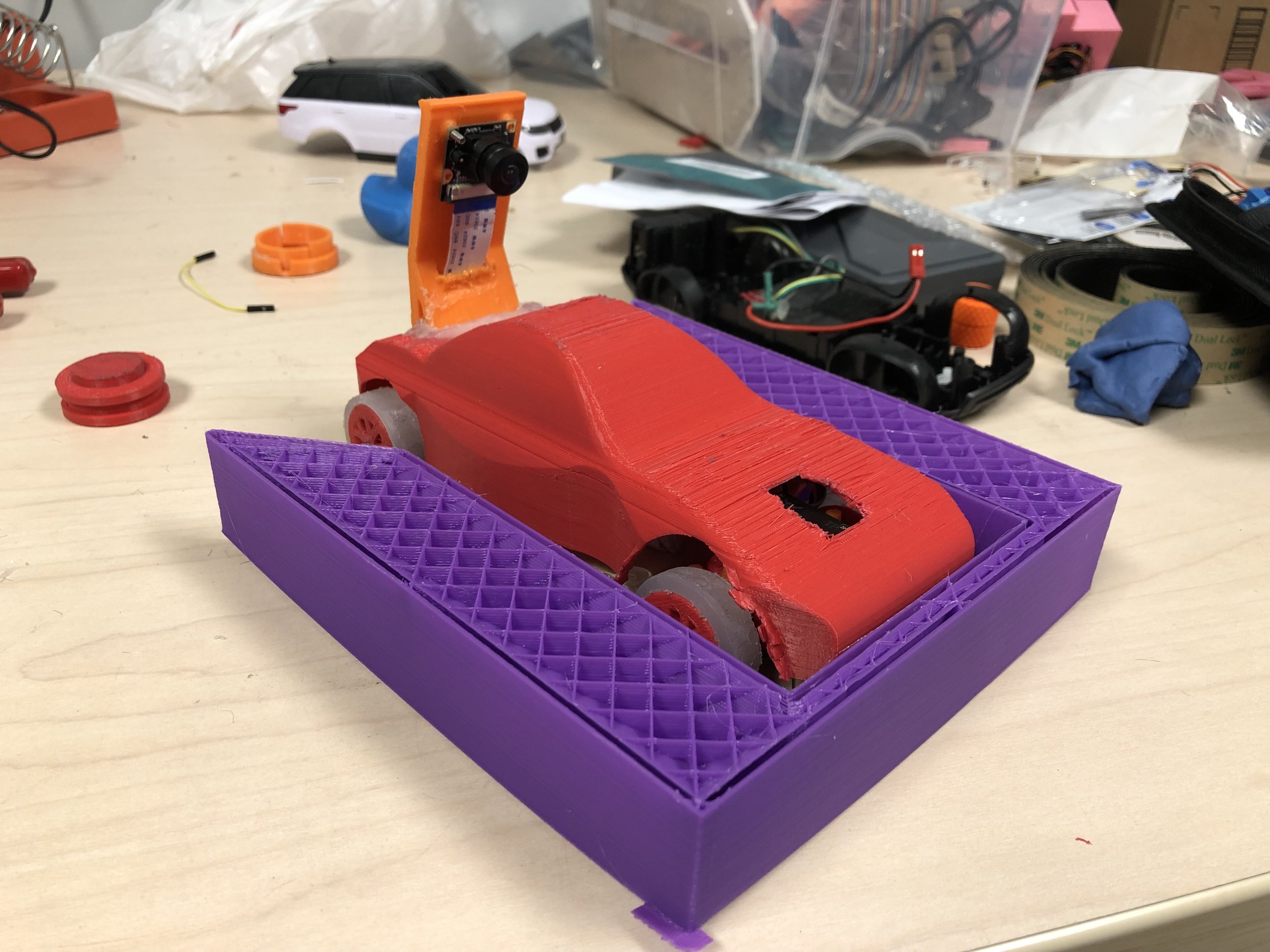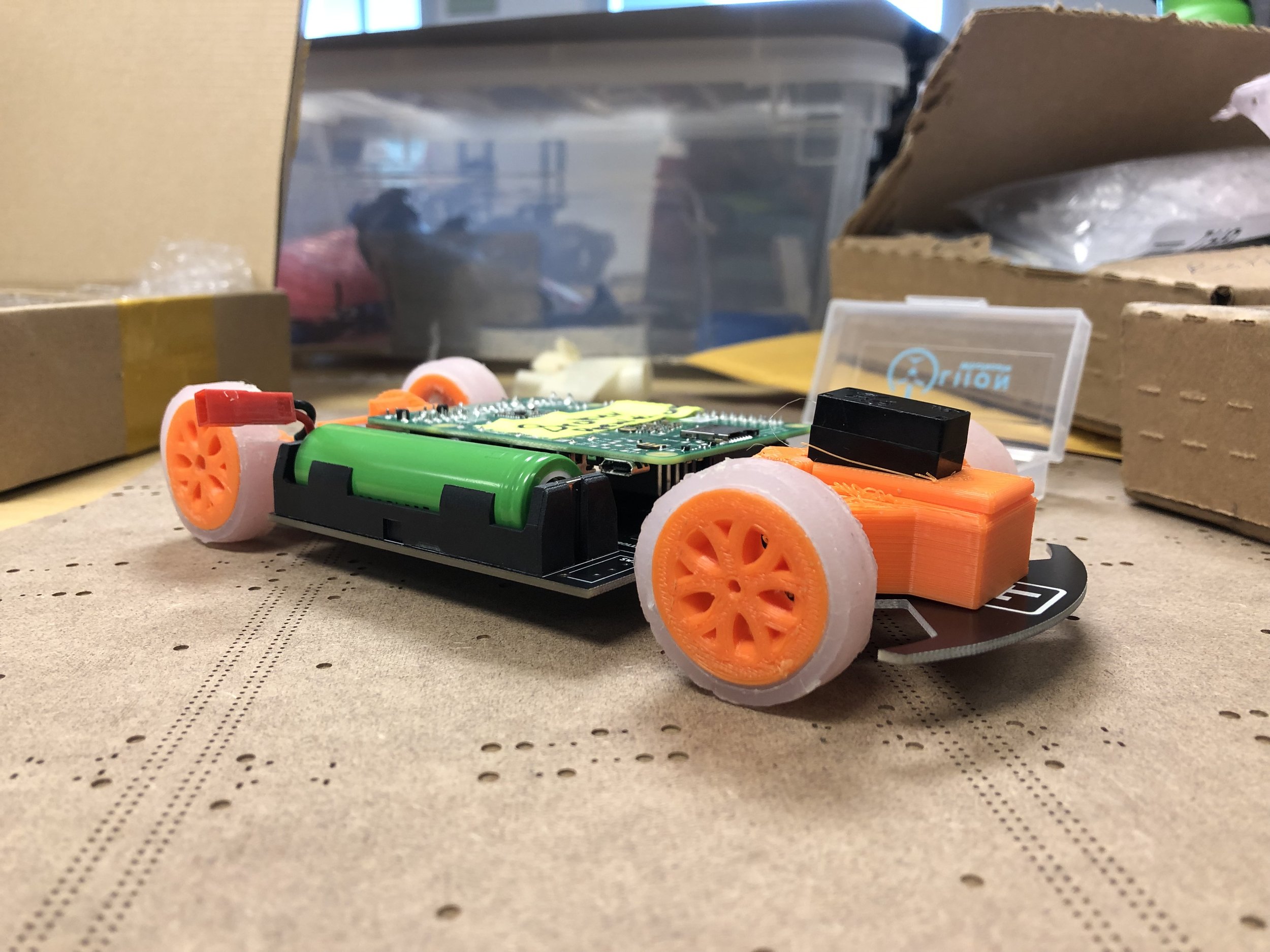
A research tool for autonomous driving code validation.
During the summer of 2019, I was accepted to an undergraduate research project at UCSD known as “Triton Town”. The goal of the project was to develop a miniature autonomous electric vehicle that could receive code updates remotely. These vehicles would drive 24/7 in a miniature city (Triton Town) with roads, intersections, and buildings. Researchers from around the world could test their AI vision control code on these vehicles, and see how they behaved. I lead the subteam responsible for developing the battery management, charging, and voltage control of the vehicle. Eventually, my subteam integrated several other functions into our PCB design and created a PCB “frame” upon which the rest of the hardware was physically built on.

Our Triton Car was significantly more compact that the previous year's attempt. This was mostly due to my PCB design heavily integrating things like motor controllers, voltage regulators, and the battery.

The camera mount is placed on the back of the car. This is to prevent damage to the camera in the event of a collision, as well as to increase our field of vision. We developed custom 3D printed wheels with injection-molded tires because there weren't any off-the-shelf parts thin enough.

A shot of the Triton Car (with camera installed) parked in one of the autonomous charging docks.

A view of the backbone PCB I designed right before SMD reflow. It combines four different functions, as well as acts as a backplane for the Raspberry Pi, 18650-cell lithium-ion battery, and motor/steering rack.

A view of the PCB with the Raspberry Pi installed, but before the battery, rear motor, front steering rack, and wheels have been installed.

A side-view of the electronics, emphasizing how compact this design was. It was over four times thinner than it's predecessor.